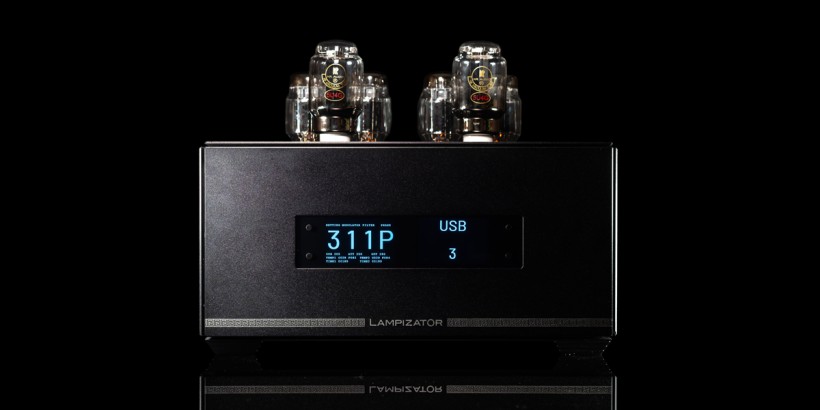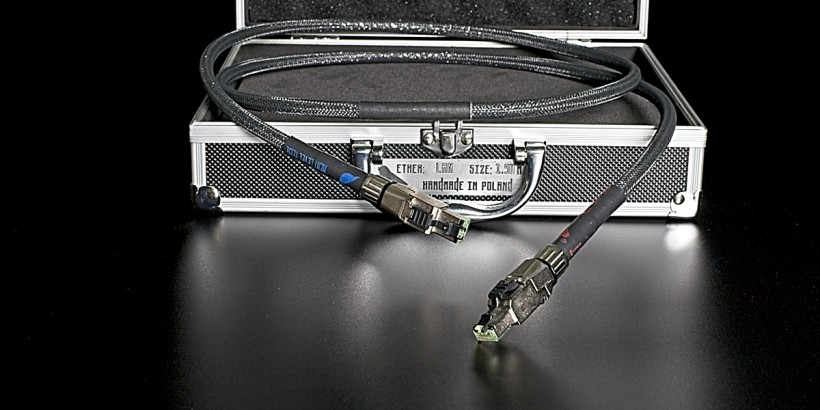Even though the COS Engineering manufacture was established just several years ago, to describe the team behind it as newcomers would be unjust. Both of this operation’s products released thus far – D1 and H1 – turned out to be terrific, well-seasoned performers. Now yet another one emerged and it has many things in common with the former deck. COS Engineering D2 is this review’s main dish. Enjoy!
Introduction
The three letters part of the COS Engineering name stands for Connoisseur Of Sound. Not a small thing to say, eh? It goes along with awareness of what’s good and what isn’t, yet in the audio realm this is a very subjective and tricky thing. To each his own, as they say. What I like, you might not. The COS Engineering message from my perspective is crystal clear, though. These people are audiophiles. If one asks now: “But are they really?”, yours truly can only answer that they have to be. Simply because products this Taiwanese team was able to pull off thus far can’t be a coincidence. Heavy R&D, unusual attention to details, proprietary solutions and – above all else – sound quality are all in check in the COS Engineering case. When this company’s D1 emerged, mild interest was there, H1 netted my curiosity and the latest D2 has my full attention.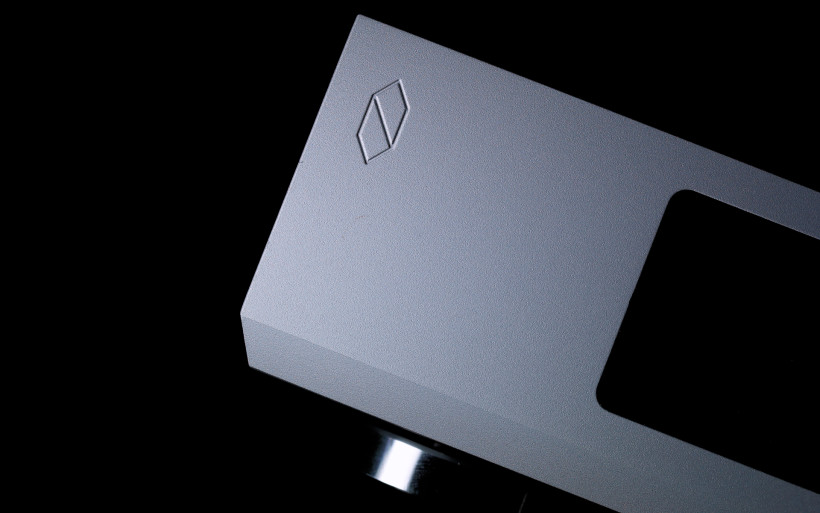 Let’s get back to the D1 case. This deck not only looks like a huge pile of money, but also acts like one. Long story’s short, this machine simply delivers no matter how you slice it and is very versatile. It’s in fact a very potent preamplifier married to a d/a converter in one very neatly executed enclosure. D1’s asking price was and still is quite steep. €9’000 can burn rather extensive holes in one’s pocket. Yet after taking into consideration its build and sound quality, this scribe got the impression that the money spend on this Taiwanese champ are justified. On the other hand, to put a company with such a product on the audio map is a completely different matter.
Let’s get back to the D1 case. This deck not only looks like a huge pile of money, but also acts like one. Long story’s short, this machine simply delivers no matter how you slice it and is very versatile. It’s in fact a very potent preamplifier married to a d/a converter in one very neatly executed enclosure. D1’s asking price was and still is quite steep. €9’000 can burn rather extensive holes in one’s pocket. Yet after taking into consideration its build and sound quality, this scribe got the impression that the money spend on this Taiwanese champ are justified. On the other hand, to put a company with such a product on the audio map is a completely different matter. There are two ways of doing the very first steps on the audio market. One can either start big and showcase the best there is right away, or build brand recognition gradually, via affordable goods and then move upwards. The COS Engineering crew decided to take the first path. Let’s be honest here, the audio world is a very hostile place. As far as sources go, one can cherry-pick to his heart’s content. It’s not easy for a newcomer to sell many goods from the upper four figures realm, no sir. This happens very rarely and for a good reason. Enthusiasts are the untrusty bunch. The observe at first; are on a lookout for reviews, comparisons and feedback in general. If there’s a chance that a given product will fit the desired description, then a finger on a trigger might be pulled. Point being, leaps of faith don’t occur in the audio nature often. When one’s own money are on the table, it’s highly likely that he’ll play it safe. Respect has to be earned first, that’s what I’m saying. And after getting myself familiarized with two COS Engineering decks, the Taiwanese team surely gained mine.
There are two ways of doing the very first steps on the audio market. One can either start big and showcase the best there is right away, or build brand recognition gradually, via affordable goods and then move upwards. The COS Engineering crew decided to take the first path. Let’s be honest here, the audio world is a very hostile place. As far as sources go, one can cherry-pick to his heart’s content. It’s not easy for a newcomer to sell many goods from the upper four figures realm, no sir. This happens very rarely and for a good reason. Enthusiasts are the untrusty bunch. The observe at first; are on a lookout for reviews, comparisons and feedback in general. If there’s a chance that a given product will fit the desired description, then a finger on a trigger might be pulled. Point being, leaps of faith don’t occur in the audio nature often. When one’s own money are on the table, it’s highly likely that he’ll play it safe. Respect has to be earned first, that’s what I’m saying. And after getting myself familiarized with two COS Engineering decks, the Taiwanese team surely gained mine.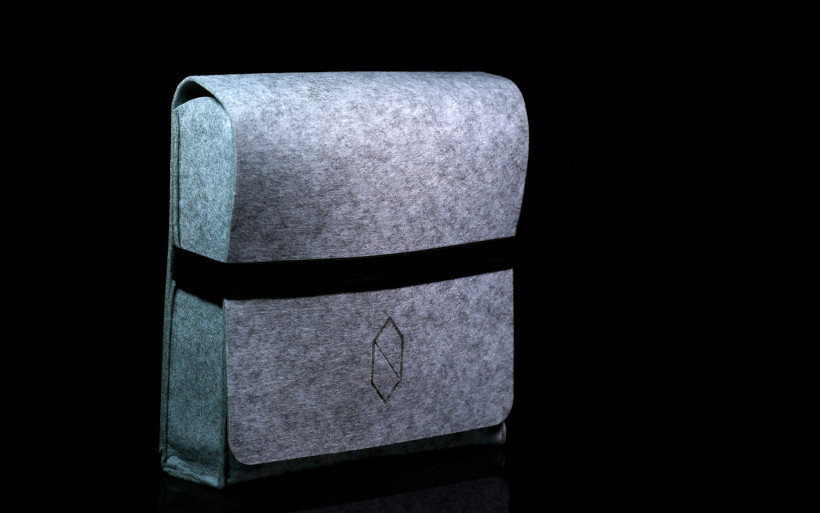 It was very unlikely that – past the D1 premiere – pricier goods were next in line. The H1 DAC and headphone amplifier combo turned out to be much more affordable, significantly smaller but also very good. To make a cans related product was undoubtedly a smart marketing move as such devices are booming for quite a while now. If someone would’ve asked me back then what will be the next COS Engineering product past H1, I’d have said that either pricey mono amps or stereo power amplifier… or their less expensive and smaller variants. Such additions would allow one to assemble fully Taiwanese setup. At least one of these is presumably in the works already, that’s my guess. But come to think of it, the D2 arrival shouldn’t be much of a surprise too. After all, proprietary tech to pull off smaller and more wallet-friendly D1 is already there.
It was very unlikely that – past the D1 premiere – pricier goods were next in line. The H1 DAC and headphone amplifier combo turned out to be much more affordable, significantly smaller but also very good. To make a cans related product was undoubtedly a smart marketing move as such devices are booming for quite a while now. If someone would’ve asked me back then what will be the next COS Engineering product past H1, I’d have said that either pricey mono amps or stereo power amplifier… or their less expensive and smaller variants. Such additions would allow one to assemble fully Taiwanese setup. At least one of these is presumably in the works already, that’s my guess. But come to think of it, the D2 arrival shouldn’t be much of a surprise too. After all, proprietary tech to pull off smaller and more wallet-friendly D1 is already there.
Build
COS Engineering D2 is a DAC with optional volume control circuitry. One might say that it’s the lesser D1 version and – as far as this deck’s functionality goes – rightfully so. To make this description even easier to understand, just add a power amplifier and a pair of speakers and you’re good to go. As I’ve already said, D the first turned out to be one fine machine and the obvious question to ask would be about its lesser brother’s potential. The former is sold for €9’000, whereas the newcomer’s asking price starts at slightly more than one third of that, €3’200 is the exact number. One third of the performance? This question the 6moons.com main man – Srajan – already addressed here. My approach is different as I don’t have D1.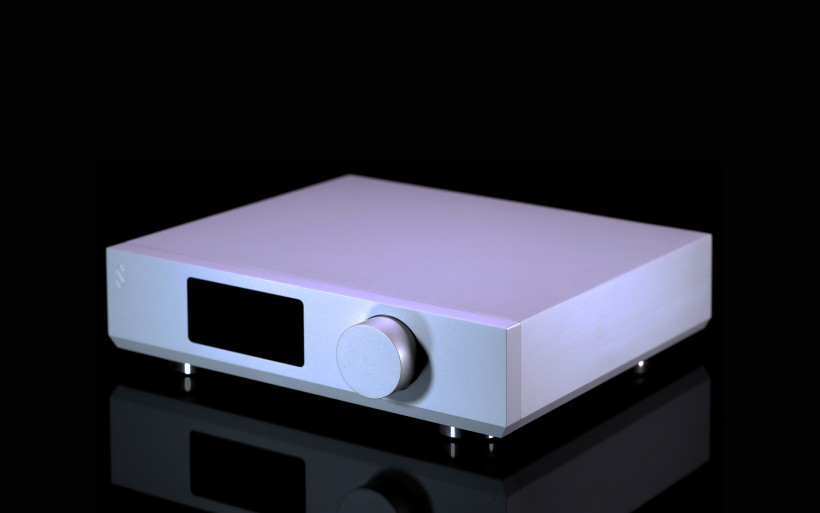 COS Engineering D2 measures ( W x D x H) 260 x 250 x 60 mm and weighs no more than 3.5 kilograms. By today’s standards these numbers make it quite compact and along the lines of H1. These two in fact share almost identical enclosure. In any case, D2 is a perfectly desktop-friendly solution, far smaller than D1, but as gorgeously made. The casework is flawless. Pictures might not quite grasp this aspect, yet rest assured it’s there. Products by COS Engineering stand out of the crowd of CNC milled aluminium enclosures easily. First of all, in the D2 case not a single screw is visible, the Taiwanese team was able to hide ’em efficiently and the outcome is visually very clean and posh. Secondly, all key parts of the product itself are connected within very steep tolerance. If there’s any gap anywhere, it remains perfectly even. Thirdly, not only interesting and very much Scandinavian-alike design makes one’s eyes happy, but the quality in general. The sensation of a luxurious product of D1 and H1 sort is simply unusually present this time around too. And lastly, the main takeaway here is that to have the same D1 meticulous fit’n’finish in three times more affordable product is impressive. No corners were cut during the reduction process and this shouldn’t come as any surprise, after all the same story was with previous COS Engineering decks as well.
COS Engineering D2 measures ( W x D x H) 260 x 250 x 60 mm and weighs no more than 3.5 kilograms. By today’s standards these numbers make it quite compact and along the lines of H1. These two in fact share almost identical enclosure. In any case, D2 is a perfectly desktop-friendly solution, far smaller than D1, but as gorgeously made. The casework is flawless. Pictures might not quite grasp this aspect, yet rest assured it’s there. Products by COS Engineering stand out of the crowd of CNC milled aluminium enclosures easily. First of all, in the D2 case not a single screw is visible, the Taiwanese team was able to hide ’em efficiently and the outcome is visually very clean and posh. Secondly, all key parts of the product itself are connected within very steep tolerance. If there’s any gap anywhere, it remains perfectly even. Thirdly, not only interesting and very much Scandinavian-alike design makes one’s eyes happy, but the quality in general. The sensation of a luxurious product of D1 and H1 sort is simply unusually present this time around too. And lastly, the main takeaway here is that to have the same D1 meticulous fit’n’finish in three times more affordable product is impressive. No corners were cut during the reduction process and this shouldn’t come as any surprise, after all the same story was with previous COS Engineering decks as well. At first glimpse, COS Engineering D2 looks exactly like H2, minus two 3-pin XLR/6,3 mm combo sockets by Neutrik. The latter was a headphone amplifier after all and as such it needed these, whereas the newcomer is a DAC above all else. The whole enclosure has neatly trimmed lower edges, just as every other COS Engineering deck. This minimalist yet recognizable design is one of this company’s trademarks. At least that’s how yours truly sees this feature after getting himself familiarized with every model the Taiwanese crew released thus far.
At first glimpse, COS Engineering D2 looks exactly like H2, minus two 3-pin XLR/6,3 mm combo sockets by Neutrik. The latter was a headphone amplifier after all and as such it needed these, whereas the newcomer is a DAC above all else. The whole enclosure has neatly trimmed lower edges, just as every other COS Engineering deck. This minimalist yet recognizable design is one of this company’s trademarks. At least that’s how yours truly sees this feature after getting himself familiarized with every model the Taiwanese crew released thus far. The D2 front is one thick and heavy aluminium plate, decorated by a small logo on the left, then a bit to the right sits 128 x 63 px OLED display. White digits on a perfectly black background are served in slightly vintage fashion thanks to fairly low resolution, yet are perfectly readable nonetheless. The biggest number displayed is the volume level and 0 to -63.75 dB is the whole range. Each step is of 0.25 dB attenuation, hence their total amount is 256. Currently used digital input, proprietary buffer on/off and signal lock are seen down below. Moving further to the right, there’s a very nicely made and evenly mounted aluminium volume knob. It rotates endlessly and also serves as an input selector. One needs to push it in order to exploit said functionality. When pressed a bit longer, it can switch the product on/off, which I’ve found to be quite handy.
The D2 front is one thick and heavy aluminium plate, decorated by a small logo on the left, then a bit to the right sits 128 x 63 px OLED display. White digits on a perfectly black background are served in slightly vintage fashion thanks to fairly low resolution, yet are perfectly readable nonetheless. The biggest number displayed is the volume level and 0 to -63.75 dB is the whole range. Each step is of 0.25 dB attenuation, hence their total amount is 256. Currently used digital input, proprietary buffer on/off and signal lock are seen down below. Moving further to the right, there’s a very nicely made and evenly mounted aluminium volume knob. It rotates endlessly and also serves as an input selector. One needs to push it in order to exploit said functionality. When pressed a bit longer, it can switch the product on/off, which I’ve found to be quite handy.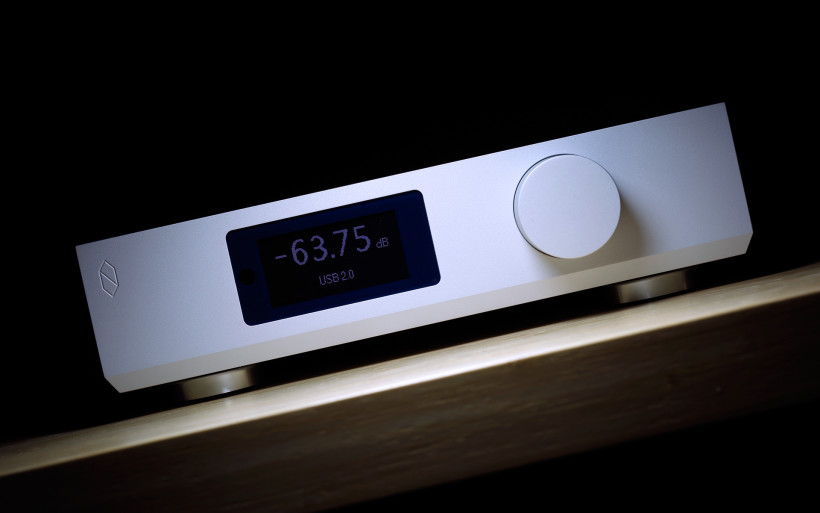 Let’s take a look at D2’s rear, to be found in a several millimeters deep cavity. There’s an IEC socket with an on/off switch on the left and five digital inputs in total next to it; AES/EBU, 2 x Toslink, 1 x coax S/PDIF and 1x USB type B. USB 2.0 and driverless 1.0 knob switch sits nearby and so does another one responsible for buffering layer defeated/operational. Two RJ-45 sockets are something new. Marked as COSlink, these will have use in the future, presumably once a stereo power amp/monos arrive. At least that’s my guess, but this remains to be seen. In any case, similar solutions are to be found in i.e. Trilogy or Cyrus products to name just two out of many companies into making their products operable as easily as possible once combined. The last stop are RCA (2Vrms) and XLR (4Vrms) outputs. Yup, no inputs, which is hardly any surprise. COS Engineering D2 was designed to be a DAC in the first place, hence to buy this product and use it solely as a preamplifier is a target missed completely. Besides, there was no room for any analog inputs in the first place.
Let’s take a look at D2’s rear, to be found in a several millimeters deep cavity. There’s an IEC socket with an on/off switch on the left and five digital inputs in total next to it; AES/EBU, 2 x Toslink, 1 x coax S/PDIF and 1x USB type B. USB 2.0 and driverless 1.0 knob switch sits nearby and so does another one responsible for buffering layer defeated/operational. Two RJ-45 sockets are something new. Marked as COSlink, these will have use in the future, presumably once a stereo power amp/monos arrive. At least that’s my guess, but this remains to be seen. In any case, similar solutions are to be found in i.e. Trilogy or Cyrus products to name just two out of many companies into making their products operable as easily as possible once combined. The last stop are RCA (2Vrms) and XLR (4Vrms) outputs. Yup, no inputs, which is hardly any surprise. COS Engineering D2 was designed to be a DAC in the first place, hence to buy this product and use it solely as a preamplifier is a target missed completely. Besides, there was no room for any analog inputs in the first place.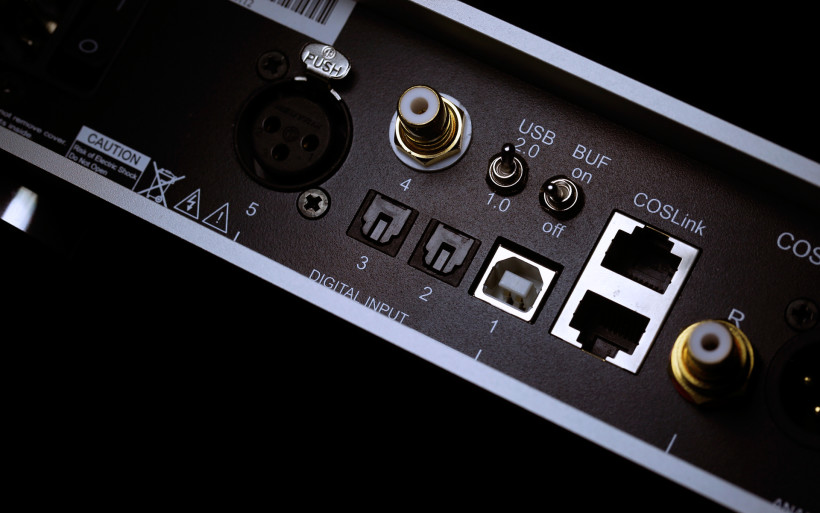 Before we’ll take a peek under D2’s hood, it’s worth to know that the product itself works like a charm from the usability standpoint. It never surprises in any unpleasant way and is very stable. After several weeks of getting to know D2, it struck me how well-thought it actually is. It turns on and off in a jiffy, its buffer works reliably as well, so does the USB 2.0/1.0 function and a very nice, large aluminium knob. Heck, the Taiwanese crew even thought about having machine visible as COS D2 in OS and not leaving one of the usual suspects to be seen instead. Practice shows that most manufacturers run with XMOS/Amanero/whatever. In any case, the Taiwanese crew pays a lot of attention to details, that’s obvious. And lastly, this review’s main dish is available in two versions; vanilla D2 and D2V. The latter is loaded with volume control module which will add €700 extra to the final €3’900 tab and is delivered with a small yet functional plastic RC.
Before we’ll take a peek under D2’s hood, it’s worth to know that the product itself works like a charm from the usability standpoint. It never surprises in any unpleasant way and is very stable. After several weeks of getting to know D2, it struck me how well-thought it actually is. It turns on and off in a jiffy, its buffer works reliably as well, so does the USB 2.0/1.0 function and a very nice, large aluminium knob. Heck, the Taiwanese crew even thought about having machine visible as COS D2 in OS and not leaving one of the usual suspects to be seen instead. Practice shows that most manufacturers run with XMOS/Amanero/whatever. In any case, the Taiwanese crew pays a lot of attention to details, that’s obvious. And lastly, this review’s main dish is available in two versions; vanilla D2 and D2V. The latter is loaded with volume control module which will add €700 extra to the final €3’900 tab and is delivered with a small yet functional plastic RC.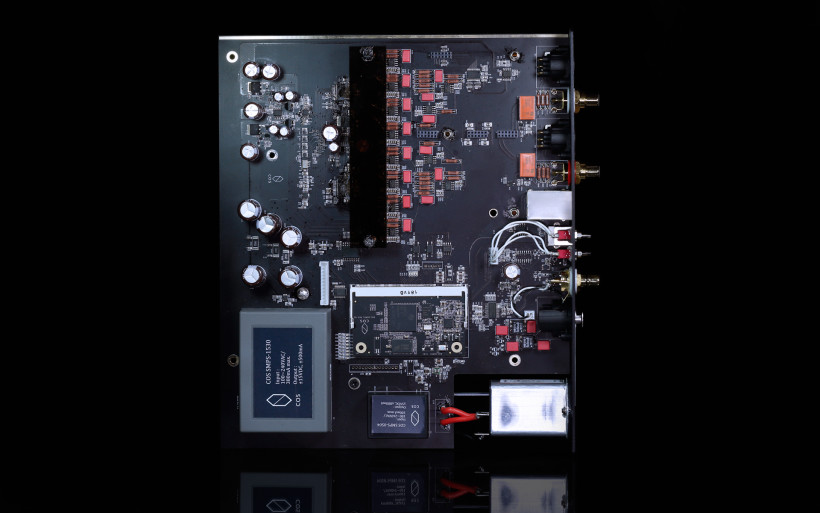 In order to get to D2’s innards, two out of four feet have to be dismounted and six screws in total are next in line; four on our machine’s rear and its underbelly sports another two. From this point onwards, the procedure is very straightforward and fatigue-free; one needs to remove the front panel, disconnect it from the main PCB, then gently pull this element out of the case and boom, the described deed might be considered as done. One big board stores nearly everything there is. Loaded with two AC filters, the PSU if of SMPS type, hence worldwide operational right off the bat. The signal first goes to Cirrus Logic 8416 receiver regardless of digital input used and proprietary COS Engineering DSP board is the next stop. This bugger’s duty is to upsample all incoming data to either 176.4 or 192 kHz via 32-bit algorithm. Said element is COS Engineering’s most guarded secret.
In order to get to D2’s innards, two out of four feet have to be dismounted and six screws in total are next in line; four on our machine’s rear and its underbelly sports another two. From this point onwards, the procedure is very straightforward and fatigue-free; one needs to remove the front panel, disconnect it from the main PCB, then gently pull this element out of the case and boom, the described deed might be considered as done. One big board stores nearly everything there is. Loaded with two AC filters, the PSU if of SMPS type, hence worldwide operational right off the bat. The signal first goes to Cirrus Logic 8416 receiver regardless of digital input used and proprietary COS Engineering DSP board is the next stop. This bugger’s duty is to upsample all incoming data to either 176.4 or 192 kHz via 32-bit algorithm. Said element is COS Engineering’s most guarded secret. Past the upsampling phase, d/a conversion happens. One Texas Instruments Burr-Brown PCM1792A silicone per channel handles that, yet its SRC module is bypassed. It’s hard to miss several precisely cut pieces of teflon insulated wire soldered to said converters’ voltage outputs. Their task is to lower SNR by 6 dB and plexi cover above ’em says “Don’t touch us!” loud and clear. Next in line is volume control. 16 attenuator chips along with WIMA capacitors sit at visible side of the PCB whereas 68 resistors are to be found on the bottom of this board. The attenuation itself happens in the analogue domain and that aluminium knob on our machine’s front is just a part of the whole volume interface. And yes, COS Engineering D2 is a fully balanced product all the way.
Past the upsampling phase, d/a conversion happens. One Texas Instruments Burr-Brown PCM1792A silicone per channel handles that, yet its SRC module is bypassed. It’s hard to miss several precisely cut pieces of teflon insulated wire soldered to said converters’ voltage outputs. Their task is to lower SNR by 6 dB and plexi cover above ’em says “Don’t touch us!” loud and clear. Next in line is volume control. 16 attenuator chips along with WIMA capacitors sit at visible side of the PCB whereas 68 resistors are to be found on the bottom of this board. The attenuation itself happens in the analogue domain and that aluminium knob on our machine’s front is just a part of the whole volume interface. And yes, COS Engineering D2 is a fully balanced product all the way.
Sound
In order to review COS Engineering D2, my Boenicke W8 reference speakers and PureAudioProject’s Trio10 Voxativ open-baffles were used. Trilogy 925 integrated, JOB 225 loaner and Sanders Sound Systems Magtech + pre combo were on duty as well. As per usual, LampizatOr Golden Gate (Psvane WE-101D + KR Audio 5U4G Ltd. Ed.) handled the d/a conversion task, whereas Asus UX305LA was responsible for files storage and OS control. Here’s the story.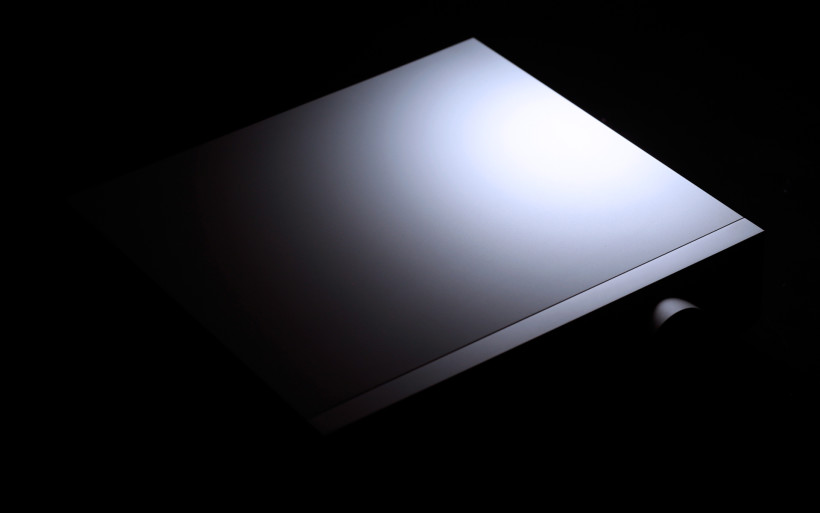 Though heavily blurred by devices reviewed afterwards (and it’s been a while), all key D1 memories are still there. This deck sang in the grain-free, not showy, slightly mellow and very mature way in general. It was refined and well-balanced. With no obvious angle, it did everything just right and nothing wrong. Yes, the D1 sounded like a lot of well-spent money, if that can be easily said about a source as expensive as this one at all. Needless to say, this machine left me very impressed as – after knowing it well in several different environments – it held its ground against truly great competitors. Long story’s short, its smaller brother is somewhat different, yet from the same mother nonetheless.
Though heavily blurred by devices reviewed afterwards (and it’s been a while), all key D1 memories are still there. This deck sang in the grain-free, not showy, slightly mellow and very mature way in general. It was refined and well-balanced. With no obvious angle, it did everything just right and nothing wrong. Yes, the D1 sounded like a lot of well-spent money, if that can be easily said about a source as expensive as this one at all. Needless to say, this machine left me very impressed as – after knowing it well in several different environments – it held its ground against truly great competitors. Long story’s short, its smaller brother is somewhat different, yet from the same mother nonetheless. Though this approach is not very informational, it’s very easy for this scribe to point out what COS Engineering D1 isn’t. Here goes then, this machine is neither too thin nor too thick, that’s the starting point. To move further, not showy and not shy, not omnipresent and not completely off the place, not warm and not cold, not too spicy and not bland at all, not dark and not lit-up and sparky. Not… well, I could go on like this for quite a while and then some. The takeaway here is that D2’s sound signature isn’t as obviously pronounced as i.e. that of my reference DAC. Wait, weren’t sources supposed to be transparent and non-invasive in the first place? The answer here depends on who you’d ask.
Though this approach is not very informational, it’s very easy for this scribe to point out what COS Engineering D1 isn’t. Here goes then, this machine is neither too thin nor too thick, that’s the starting point. To move further, not showy and not shy, not omnipresent and not completely off the place, not warm and not cold, not too spicy and not bland at all, not dark and not lit-up and sparky. Not… well, I could go on like this for quite a while and then some. The takeaway here is that D2’s sound signature isn’t as obviously pronounced as i.e. that of my reference DAC. Wait, weren’t sources supposed to be transparent and non-invasive in the first place? The answer here depends on who you’d ask. In a nutshell, COS Engineering D2 is a charming little performer. It’s game isn’t to jump on a listener with its own character, but being easygoing and enabling the rest of the setup its own thing instead. “What’s so special about this?” – one might ask. Well, to not be the attention vampire yet to remain elegant and very informational at the same time in fact is the difficult and noteworthy part. Let me explain. Past the D2 arrival I haven’t even noticed its presence. The product was hooked to the main rig instead of the reference DAC and remained my daily driver for two weeks or so. Once in a while I sat to have a listen and then got back to my daily routine, writing/photos that is. And here’s the fun part: there was no fatigue or displeasure for any reason, during my casual approaches the sound was as enjoyable as per usual. Point being, the D2 blended in seamlessly and remained like so throughout the whole time. Very quickly I stopped caring that far costlier Golden Gate wasn’t on duty.
In a nutshell, COS Engineering D2 is a charming little performer. It’s game isn’t to jump on a listener with its own character, but being easygoing and enabling the rest of the setup its own thing instead. “What’s so special about this?” – one might ask. Well, to not be the attention vampire yet to remain elegant and very informational at the same time in fact is the difficult and noteworthy part. Let me explain. Past the D2 arrival I haven’t even noticed its presence. The product was hooked to the main rig instead of the reference DAC and remained my daily driver for two weeks or so. Once in a while I sat to have a listen and then got back to my daily routine, writing/photos that is. And here’s the fun part: there was no fatigue or displeasure for any reason, during my casual approaches the sound was as enjoyable as per usual. Point being, the D2 blended in seamlessly and remained like so throughout the whole time. Very quickly I stopped caring that far costlier Golden Gate wasn’t on duty.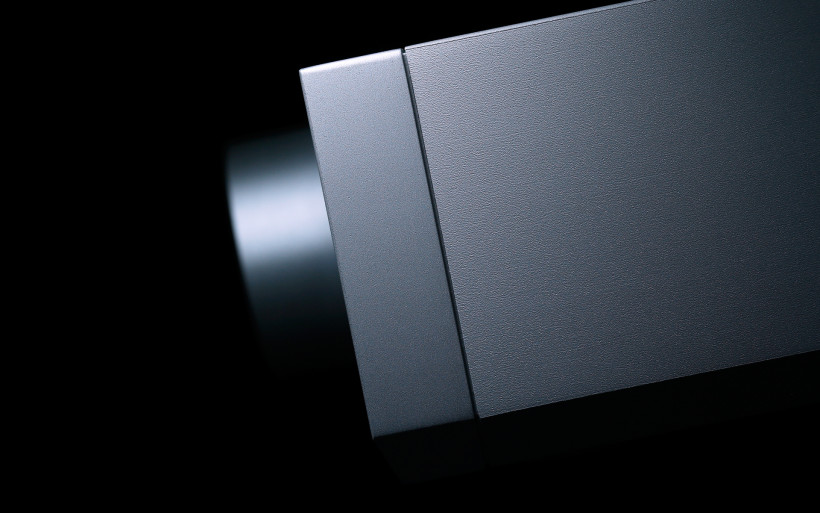 Ain’t that something? To switch from a $22’000 source to a product times more affordable and forget that the former is no longer there? This happened exactly and – as far as I remember – the D1 pulled off a very similar trick on me. When everything’s just right, there’s no need to be picky. One simply enjoys the show and desire to improve or change an outcome isn’t there. The analytical mindset is simply off and relaxing mood kicks-in instead. This doesn’t happen that often and is valuable once present. In this regard the D2 loaner did the job oh so right.
Ain’t that something? To switch from a $22’000 source to a product times more affordable and forget that the former is no longer there? This happened exactly and – as far as I remember – the D1 pulled off a very similar trick on me. When everything’s just right, there’s no need to be picky. One simply enjoys the show and desire to improve or change an outcome isn’t there. The analytical mindset is simply off and relaxing mood kicks-in instead. This doesn’t happen that often and is valuable once present. In this regard the D2 loaner did the job oh so right.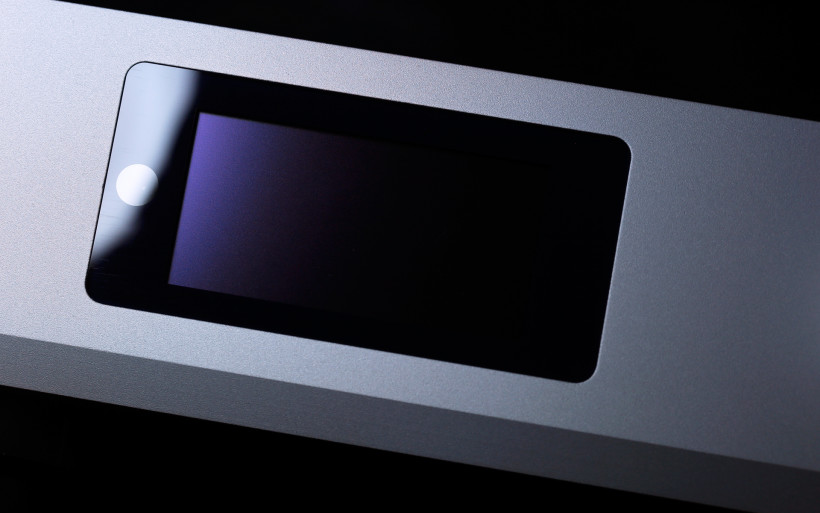 D1’s smaller sibling turned out to be a very clean performer too. Not sterile, but clean; every piece of information in music was showcased clearly and with no effort, yet not magnified, sharp and stripped from lively tissue in the process. Detail retrieval occurred naturally with the Taiwanese machine, not a single moment of itchy overexposure or grain was present. A very similar story was with D1, go figure. The next checkbox ticked off was a textbook balance between contour and roundness and the same thing was with tension and a bit more stretchy, less orderly approach ratio. My point here is that all this was heard when needed and heavily dependant on a given track. And probably because of this equilibrium and very much music related attitude, it was difficult to sketch the D2 profile right from the get-go. Still, this machine is not a mystery, careful seasoning is the crucial descriptive measure, yet at the same time just a part of the whole story.
D1’s smaller sibling turned out to be a very clean performer too. Not sterile, but clean; every piece of information in music was showcased clearly and with no effort, yet not magnified, sharp and stripped from lively tissue in the process. Detail retrieval occurred naturally with the Taiwanese machine, not a single moment of itchy overexposure or grain was present. A very similar story was with D1, go figure. The next checkbox ticked off was a textbook balance between contour and roundness and the same thing was with tension and a bit more stretchy, less orderly approach ratio. My point here is that all this was heard when needed and heavily dependant on a given track. And probably because of this equilibrium and very much music related attitude, it was difficult to sketch the D2 profile right from the get-go. Still, this machine is not a mystery, careful seasoning is the crucial descriptive measure, yet at the same time just a part of the whole story.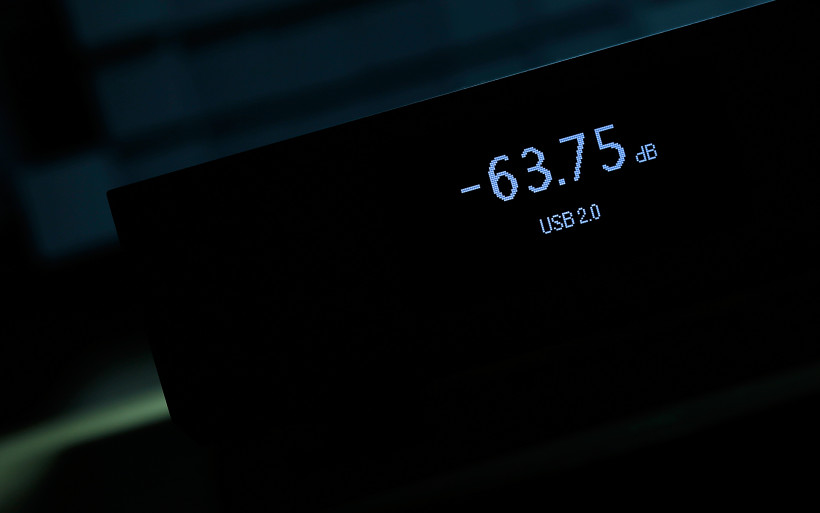 We’ve already established that COS Engineering D2 emphasize informational element in music, yet serves it in a humane and not invasive fashion. And to move a bit further along those lines, this deck is in fact fully-grown up top, not showy at all yet of great quality nonetheless. At the same time it’s worth to know that this is not a meaty monster. Density and saturation are present when needed yet carefully dosed. D2 is not about gravity, it plays in the energetic and agile league instead. Low FR is tight, nicely textured and not even slightly overblown or boomy and this efficiently boosts informational value of everything up above. I’d say that the overall tonal balance is a spot-on, yet when ears are adjusted to more downstairs presence, it takes time to grasp the new picture properly. Though it’s worth to know that once demand for feisty and punchy approach is needed, D2 will deliver. The key here is to know that this product simply doesn’t shout everywhere that it’s perfectly capable of this. Our Taiwanese champ is not about words but deeds instead and… that’s very classy.
We’ve already established that COS Engineering D2 emphasize informational element in music, yet serves it in a humane and not invasive fashion. And to move a bit further along those lines, this deck is in fact fully-grown up top, not showy at all yet of great quality nonetheless. At the same time it’s worth to know that this is not a meaty monster. Density and saturation are present when needed yet carefully dosed. D2 is not about gravity, it plays in the energetic and agile league instead. Low FR is tight, nicely textured and not even slightly overblown or boomy and this efficiently boosts informational value of everything up above. I’d say that the overall tonal balance is a spot-on, yet when ears are adjusted to more downstairs presence, it takes time to grasp the new picture properly. Though it’s worth to know that once demand for feisty and punchy approach is needed, D2 will deliver. The key here is to know that this product simply doesn’t shout everywhere that it’s perfectly capable of this. Our Taiwanese champ is not about words but deeds instead and… that’s very classy. Let’s address the speed matter. In short, COS Engineering D2 is fast. That’s what usually happens when the sound isn’t thick all the time. To pull this off, the sensation of control has to be there as well, namely no wobbly and overly rounded bass response when not needed and this is something D2 also does very well. I can’t say how this deck would fare in these regards against its older brother. Based on my memories of the latter, I strongly believe that it’d be more mellow and denser in direct comparison. Srajan indicated in his review that different power supplies (SMPS vs linear PSU) might be the reason for this meta shift. In any case, D2 doesn’t emphasize mellowness and peace (unless that’s a part of auditioned music), it’s too jumpy to be described as such. Yet it’s as gracious as a gazelle here and not as an elephant, which makes helluva difference. To translate this to more understandable lingo, D2 remains posh and elegant even when the rushing job is on. There’s no struggle in the sound of this device.
Let’s address the speed matter. In short, COS Engineering D2 is fast. That’s what usually happens when the sound isn’t thick all the time. To pull this off, the sensation of control has to be there as well, namely no wobbly and overly rounded bass response when not needed and this is something D2 also does very well. I can’t say how this deck would fare in these regards against its older brother. Based on my memories of the latter, I strongly believe that it’d be more mellow and denser in direct comparison. Srajan indicated in his review that different power supplies (SMPS vs linear PSU) might be the reason for this meta shift. In any case, D2 doesn’t emphasize mellowness and peace (unless that’s a part of auditioned music), it’s too jumpy to be described as such. Yet it’s as gracious as a gazelle here and not as an elephant, which makes helluva difference. To translate this to more understandable lingo, D2 remains posh and elegant even when the rushing job is on. There’s no struggle in the sound of this device.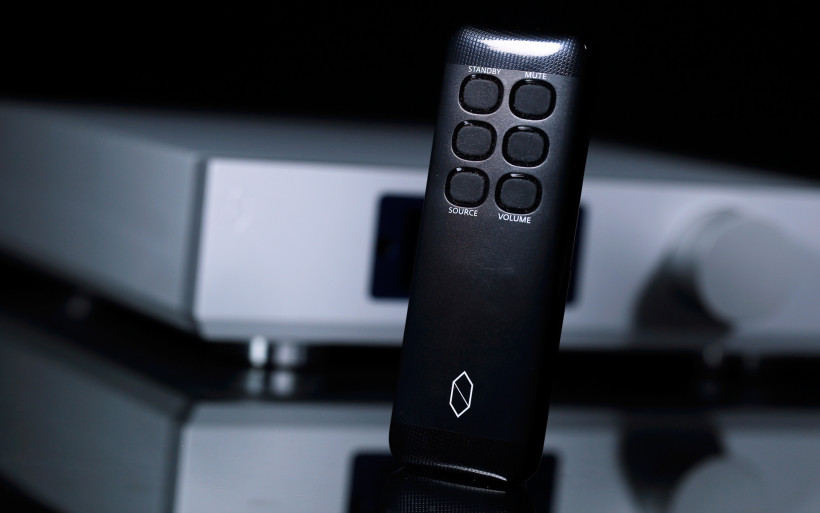 Thus far D2 turns out to be even, informational, slightly thin and fast performer. Its sound is also sprinkled by the usual audiophile frosting; tangibility, smoothness, careful seasoning and in general lively and stress free attitude. But the real question is this: how it fares against much pricier competitor? There was no room for half-measures here. Since the Taiwanese loaner took place of my Golden Gate, the latter had to return to his rightful spot eventually. Once critical listening kicked-in with full speed, several very clear differences between both decks emerged rather quickly. First and foremost, my daily reference sports much more substantial and present attitude. Its game is to paint the very first row very clearly and quite closely, whereas the Taiwanese machine remains neutral here. It doesn’t emphasize neither events up close nor shenanigans in the background and showcases all this as evenly as possible instead. Not flat, mind you, but equally spread across very generous soundstage. Golden Gate is denser and – because of thunderous, exceptionally agile low FR and generous basement reach – feistier. These differences already do properly descriptive job and show clearly what’s what, but there’s more. My daily source is very lively and able to create image of truly remarkable size, whereas D2 is somewhat smaller, yet similarly airy and open.
Thus far D2 turns out to be even, informational, slightly thin and fast performer. Its sound is also sprinkled by the usual audiophile frosting; tangibility, smoothness, careful seasoning and in general lively and stress free attitude. But the real question is this: how it fares against much pricier competitor? There was no room for half-measures here. Since the Taiwanese loaner took place of my Golden Gate, the latter had to return to his rightful spot eventually. Once critical listening kicked-in with full speed, several very clear differences between both decks emerged rather quickly. First and foremost, my daily reference sports much more substantial and present attitude. Its game is to paint the very first row very clearly and quite closely, whereas the Taiwanese machine remains neutral here. It doesn’t emphasize neither events up close nor shenanigans in the background and showcases all this as evenly as possible instead. Not flat, mind you, but equally spread across very generous soundstage. Golden Gate is denser and – because of thunderous, exceptionally agile low FR and generous basement reach – feistier. These differences already do properly descriptive job and show clearly what’s what, but there’s more. My daily source is very lively and able to create image of truly remarkable size, whereas D2 is somewhat smaller, yet similarly airy and open.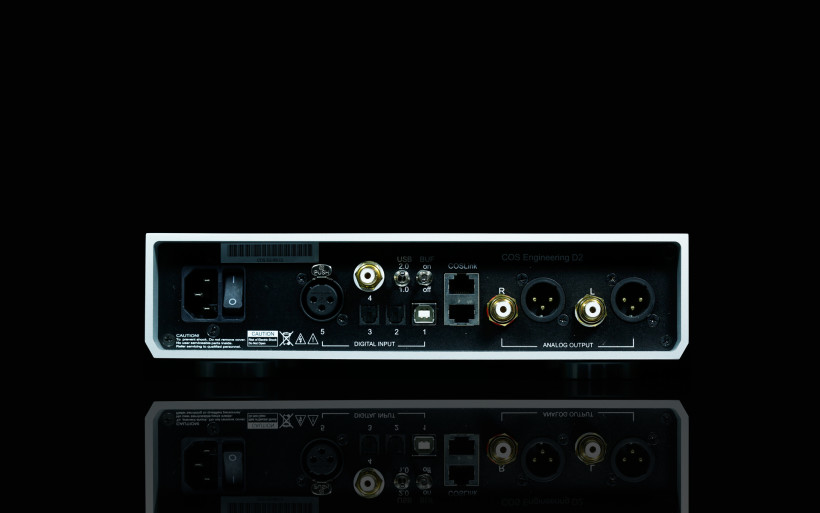 It occurred to me that this machine’s character was showcased with less directness and shove, yet more modesty and reserve instead. Golden Gate was the flamboyant and flashier one of the two. Apples and oranges, but here’s the major kicker: D2’s ability to show what my speakers and amplifier are all about was surely there and that’s very valuable. This deck simply enabled them to do their work via removing itself from the best spot on the pedestal. And since it’s a fabulous product as is – clear, precise, smooth and vivid, yet with no issues related to texturing, imaging or any part of audible FR – that’s the very reason why yours truly could listen to it with unrestrained joy. Such an outcome for more than five times lesser coin than my daily driver? I’ll take it any day with no questions asked.
It occurred to me that this machine’s character was showcased with less directness and shove, yet more modesty and reserve instead. Golden Gate was the flamboyant and flashier one of the two. Apples and oranges, but here’s the major kicker: D2’s ability to show what my speakers and amplifier are all about was surely there and that’s very valuable. This deck simply enabled them to do their work via removing itself from the best spot on the pedestal. And since it’s a fabulous product as is – clear, precise, smooth and vivid, yet with no issues related to texturing, imaging or any part of audible FR – that’s the very reason why yours truly could listen to it with unrestrained joy. Such an outcome for more than five times lesser coin than my daily driver? I’ll take it any day with no questions asked. The last thing to do was to find out how D2’s volume control would fare against a proper standalone preamplifier. A deck by Sanders Sound Systems entered the battlefield. That’s a €4’500 machine against €700 module comparison right there. Not fair? Well, to say that this skirmish our Taiwanese jewel lost before it even started would be wrong as no such thing happened. It all comes down to specific needs a given setup might have. Attenuation boards in both Golden Gate and D2 are very peculiar, they impact sound in a similar way, namely they tend to take some of density away and as such are quite efficient remedies for thick, sluggish and bloated sound if nothing else is spoiled along the road and in general intact. Here our Taiwanese machine’s resistors and silicone filled PCB does the job very nicely. It acts in predictable way by making the outcome on the lean side; neither does it cripple imaging, nor inject grain, decrease dynamics or steal the lively element. Nothing of the sort is the case. American preamplifier elevates temperature slightly, brings additional muscle tissue to the table and also boosts vividness. In short, it does completely different things and – again – it all depends on a setup whether such an input is beneficial or not. Hence if you want to have one deck less in your rig and to make the sound slightly faster and leaner yet of the same quality is your goal, additional €700 spent on a D2’s volume module I consider as fully justified in such a scenario.
The last thing to do was to find out how D2’s volume control would fare against a proper standalone preamplifier. A deck by Sanders Sound Systems entered the battlefield. That’s a €4’500 machine against €700 module comparison right there. Not fair? Well, to say that this skirmish our Taiwanese jewel lost before it even started would be wrong as no such thing happened. It all comes down to specific needs a given setup might have. Attenuation boards in both Golden Gate and D2 are very peculiar, they impact sound in a similar way, namely they tend to take some of density away and as such are quite efficient remedies for thick, sluggish and bloated sound if nothing else is spoiled along the road and in general intact. Here our Taiwanese machine’s resistors and silicone filled PCB does the job very nicely. It acts in predictable way by making the outcome on the lean side; neither does it cripple imaging, nor inject grain, decrease dynamics or steal the lively element. Nothing of the sort is the case. American preamplifier elevates temperature slightly, brings additional muscle tissue to the table and also boosts vividness. In short, it does completely different things and – again – it all depends on a setup whether such an input is beneficial or not. Hence if you want to have one deck less in your rig and to make the sound slightly faster and leaner yet of the same quality is your goal, additional €700 spent on a D2’s volume module I consider as fully justified in such a scenario.
Summary
There’s a tremendous number of DACs on the market; single-ended and balanced, with volume control or without, vintage R2R based and ΣΔ, solid-state and valved, big and small, excessively costly and suspiciously affordable… this list goes on and on. One can mix’n’match for long hours and it’s highly likely that a device literally tailored to a very specific needs is to be found without too much effort. That’s how crowded the d/a conversion shelf is today. Why to bother then and play this game?
We’d have to ask the COS Engineering crew to know the exact answer to the question above. But this yours truly is aware of now: they devoted several years to learn how to do this right. This Taiwanese team developed proprietary tech, obviously pays fanatical attention to both details and sound quality and doesn’t cut corners. Not a single one. When all that is very cleanly and aptly merged into one fancy box, the outcome is nothing short but a fine piece of hardware. That was the history with both D1 and H1 models and now it repeats itself in the D2 case, made by the very same people.
COS Engineering D2 is phenomenally built, that’s the world class enclosure right there. It gets different than this yet hardly any better as far as enclosures’ fit’n’finish goes, even in case of far pricier machines of similar sort. This compact champ’s functionality is also noteworthy, it’s very convenient to use and well-thought. Driverless mode, proper OS naming and an option to defeat buffering layer in order to have lip-sync in check are clever details many manufacturers don’t think of. Heck, there’s no pressure at all to go after volume control module if one doesn’t feel like it and if that’s the case, lesser money will be spent in the process. Ain’t it grand to have an alternative of this sort?
Our Taiwanese champ gets the job done very well in the sound quality department as well, it ticks off every checkbox there is, delivers respectable performance on every field. Hence if you’re on a lookout for a refined, well-seasoned, agile, very informational and flexible DAC, which also happens to be amazingly built and from the ~€3’000 realm and not higher, COS Engineering D2 is the one to get yourself familiarized with. Very nice work indeed and ’till next time!
Associated equipment:
- Amplifiers: Trilogy 925, Sanders Sound Systems Magtech, JOB 225
- Preamplifier: Sanders Sound Systems preamplifier
- Sources: Lampizator Golden Gate (Psvane WE101D-L + KR Audio 5U4G Ltd. Ed.)
- Speakers: Boenicke Audio W8, PureAudioProject Trio10 Voxativs
- Transports: Asus UX305LA
- Speaker cables: Forza AudioWorks Noir Concept, Audiomica Laboratory Celes Excellence
- Interconnects: Forza AudioWorks Noir, Audiomica Laboratory Erys Excellence
- Power supply: Gigawatt PF-2 + Gigawatt LC-2 MK2 + Forza AudioWorks Noir Concept/Audiomica Laboratory Ness Excellence
- Rack: Franc Audio Accessories Wood Block Rack
- Music: NativeDSD
Retail prices of reviewed components in EU (incl. tax):
- COS Engineering D1: €3’200
- COS Engineering D2V: €3’900
Manufacturer: COS Engineering
















































